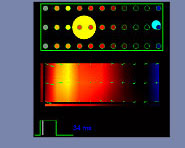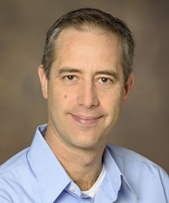|

Click for Video:
Electrode Array Imaging
of Cat Auditory Cortex


Click for Video:
Muscle Strain Imaging
|
 |
 Russell
S. Witte, PhD Russell
S. Witte, PhD
Professor
Medical Imaging, Biomedical Engineering, Optical Sciences, Surgery, and Neurosurgery
Russell S. Witte graduated with Honors in Physics (BS, 1993) from University of Arizona and Bioengineering (PhD, 2002) from Arizona State University,
where he used microelectrode arrays to study sensory coding and learning-induced plasticity in the mammalian brain.
To address limitations with state-of-the-art brain imaging (e.g., fMRI, EEG, MEG),
Dr. Witte joined the Biomedical Ultrasound Laboratory at the University of Michigan as a postdoctoral fellow,
where he helped develop numerous hybrid imaging approaches integrating light, ultrasound, and microwaves to map optical, mechanical, and dielectric properties of tissue
at high spatial resolution.
Dr. Witte now resides in his hometown of Tucson, where he is Professor of Medical Imaging, Biomedical Engineering, and Optical Sciences at the University of Arizona.
His Experimental Ultrasound and Neural Imaging Laboratory (EUNIL) continues to develop hybrid imaging methods to address grand medical challenges,
such as high resolution electrical mapping of the human heart and brain.
The ultimate goal of Dr. Witte's research is to improve patient care by providing tools for better diagnostic accuracy and treatment-decision making
for conditions ranging from epilepsy and arrhythmia to breast cancer.

Other EUNIL Members |